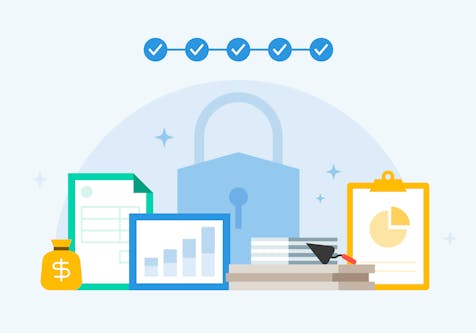7 Ways to Resolve Conflicts with Clients
Disagreements Happen; The Key is How You Handle Them

Even in the best of business relationships, conflicts with customers are inevitable, especially for design and construction pros who are working on something as personal as a client’s home.
Learning to deftly manage conflicts with clients demonstrates that professionalism runs through every aspect of your business while maintaining strong, positive relationships with your clients. Disagreements that spin out of control can adversely impact your reviews, company reputation, or lead to more serious issues such as legal action against your firm.
In this article, we suggest ways to reduce the risk of conflict, prevent it from escalating when it does occur and offer strategies for reaching a mutual resolution.

Try an Ounce of Prevention
Ultimately, the best solution is to head off conflict before it arises. Being proactive in your communications with clients, and establishing a collaborative partnership from the start can help the bumpy parts of the project journey run more smoothly. For example:
- From the first meeting, lay out how you will communicate with clients and prepare them for the possibility of supply chain, inflationary pricing and budget changes that may occur through the life of a project.
- Warn clients of project delays or other surprises as soon as you become aware of them.
- Use a Client Dashboard like that in Houzz Pro to keep clients in the loop, giving them easy access to all communication history and project details. There, clients can leave comments and messages, view daily logs and pay invoices, bringing homeowners into the collaboration process, while giving pros the ability to decide what information to share.

Resolve Quickly, But Prepare First
When your best prevention efforts fall short and a problem approaches a boiling point, reach out to find a solution as soon as possible. The more time that passes, the more likely frustrations will build on both sides, making a resolution more challenging to agree on. Before you contact your client, think carefully about what you are going to say, and how you are going to say it. Jotting down some notes in advance to gather your thoughts can help you stay on track during the conversation. If you have Houzz Pro management software, revisit the project timeline, variation orders, client dashboard history or any documentation that is relevant to refresh your memory and sequence of what occurred.

Meet in Person or on Zoom
Emails, texts and phone calls are notoriously ineffective ways to resolve conflicts because they are void of the body language that conveys so much, making the conversations vulnerable to misinterpretation. And, who has not experienced that moment of sending an email or text that they later regret?
Set up a time to meet with your client in person or on a video call and when you do meet be aware of your eye contact and body language.
What you’re saying is as important as how you are saying it. Maintain eye contact when you are speaking to convey that you are listening to what your client is saying even if what they are saying may be difficult to hear. Keep a calm tone, and avoid making gestures and facial expressions while they are speaking.

Really Listen
Nodding, asking non-judgemental questions and summarising the conversation are effective ways to make your client feel valued and heard, and keep the interaction positive. Try to listen actively to what they are saying when they are saying it instead of formulating in your head how you plan to respond to their comments.
Avoid interrupting, giving them space to speak until they are finished with what they have to say. This will make them feel like they are being heard and make it easier for you to more clearly understand precisely what they are seeking. Try to put yourself in their shoes and consider their perspective. Demonstrating this empathy will improve the chances of reaching an amicable agreement.

Lead With Reason
It’s easy to feel defensive, frustrated or angry when trying to resolve an issue, especially if you think the client is being unreasonable, but by taking the lead in being reasonable, you can set the tone of the conversation. Base the discussion on facts rather than on how either of you is feeling.
If the conversation does touch on emotions, use phrases like “I feel” or “When you did X, it caused me to feel X.” This can help contain your client’s potential anger and keep them open to hearing you and resolving the situation.

Watch Your And, Ifs & Buts
Intentionally choosing specific, neutral words can help tamp down your client’s defensiveness and make them more open to hearing your side of the story.
One tried and true way to avoid assigning blame while offering an explanation is to use the word “and” instead of “but.” Saying “You wanted this done by the end of the week, and our team is already working on another deadline” sounds more positive than “You want this done by the end of the week, but our team is already working on another deadline.”
It may seem like a small adjustment, but by avoiding the word ‘but’ you invite your client to consider the issues you face so that they are less likely to hear it as an argument.

Document The Resolution & Path Forward
Congratulations! You have reached an agreement. Now, make sure that you and your client are on the same page with the resolution. With modern software like Houzz Pro, it is easy for both you and the client to document your summary in the Client Dashboard so there is clarity on what you decided during the conversation.
No matter what the stage of the project where this conflict occurred, this is also a good time to revisit how collaboration between you and your client will progress to reduce the risk of future misunderstandings from escalating.
Houzz Pro can help you manage communications and project timelines. Tools like a Mood Board that communicate your vision and allow your client to sign off on the products to be purchased can avoid ordering mistakes, for example. E-Signatures on proposals and sourcing help assure everyone is on the same page. And, the Client Dashboard lets your customers track the project from start to finish. They can look at any time of the day or night to see what work is being done on their project in the coming week, keeping them informed and making them feel like a valued partner in the project.
Yes. Uncomfortable disagreements can happen to the best of the pros in the design and construction field, but handling them quickly and skillfully will get your project and client relationship back on a positive track.






